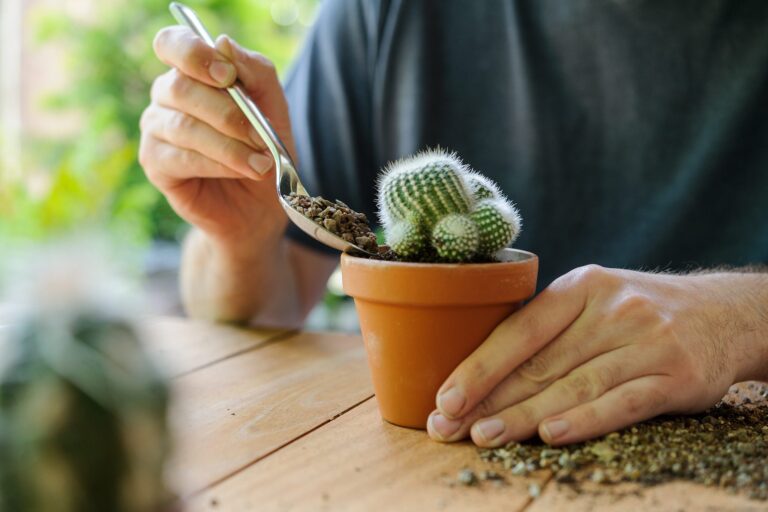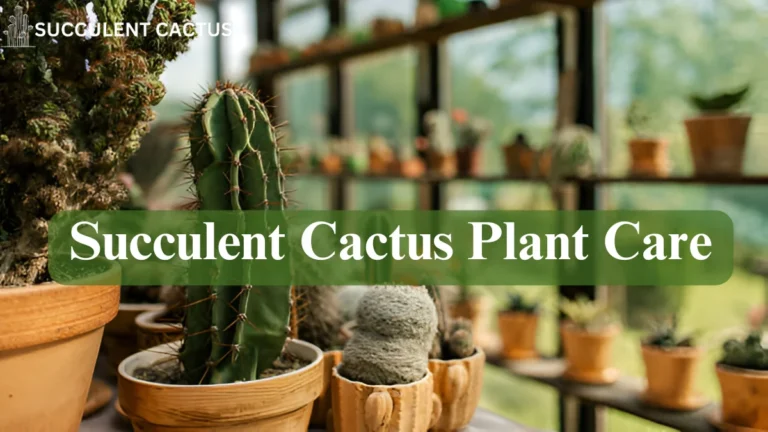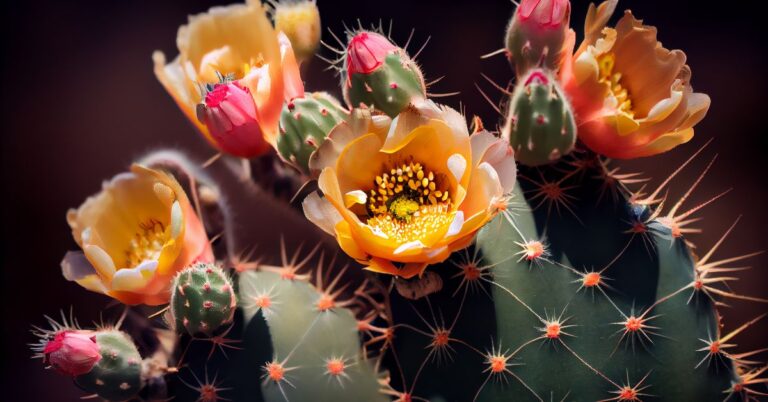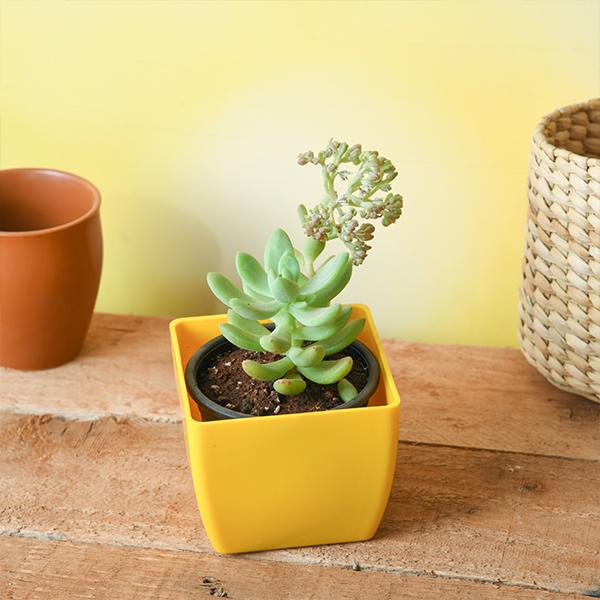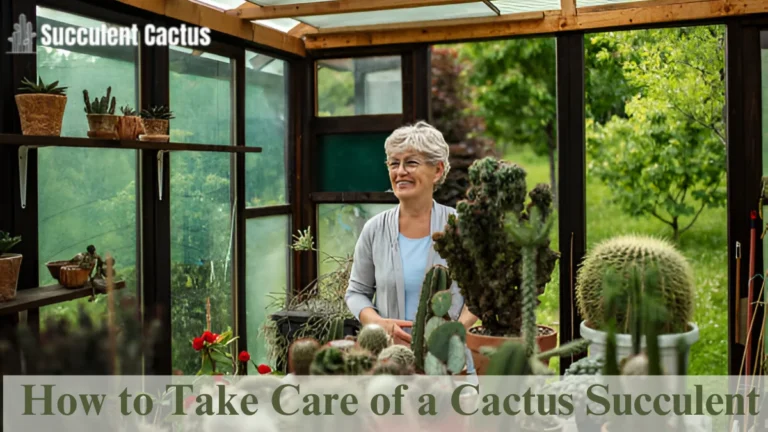Cactus Succulent Landscape Design: Transforming Outdoor Spaces
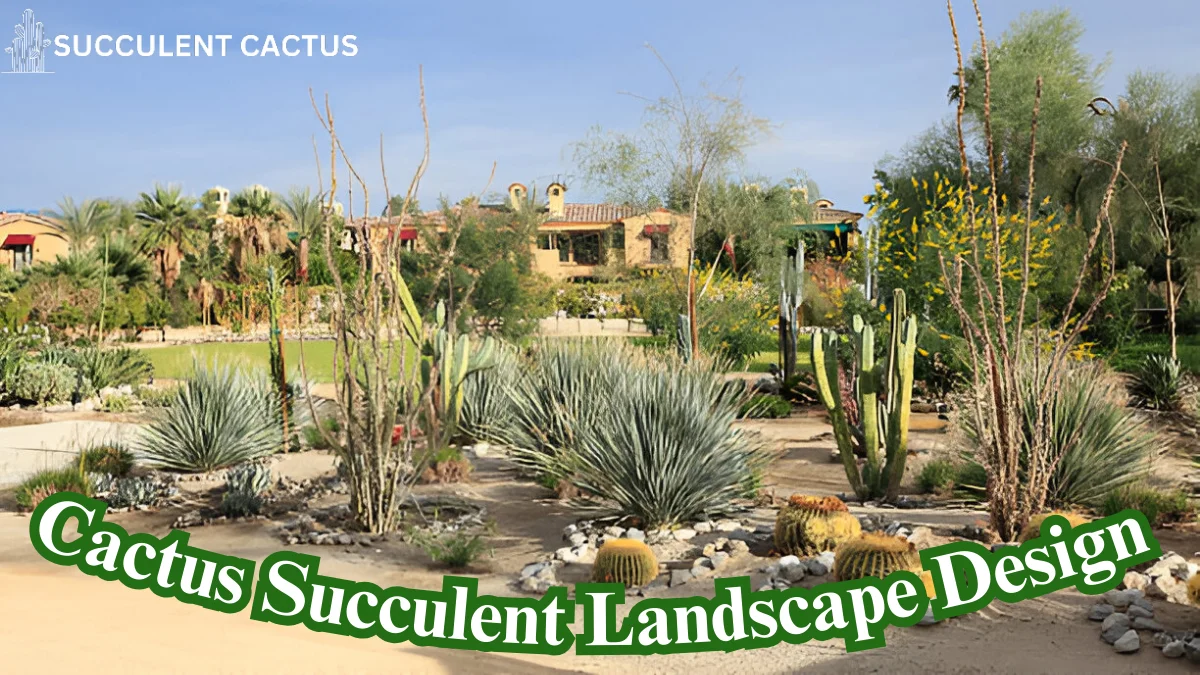
Designing landscapes using cacti and succulents can transform your outdoor spaces into low-maintenance, eco-friendly paradises. These plants not only offer a wide range of textures, shapes, and colors but also thrive in arid and drought-prone environments. In this blog, we’ll explore how to create a stunning cactus succulent landscape design that blends functionality, aesthetics, and sustainability.
Introduction to Cactus Succulent Landscape Design
What Is Cactus Succulent Landscape Design?
Cactus succulent landscape design involves using drought-tolerant plants such as cacti and succulents to create sustainable and aesthetically pleasing outdoor spaces. Unlike traditional gardens that rely heavily on water and maintenance, these designs thrive in arid environments, making them an excellent choice for regions experiencing water shortages or for homeowners seeking low-maintenance landscaping.
This type of design focuses on incorporating plants with unique shapes, textures, and colors, ranging from towering saguaros to small rosettes of echeveria. The combination of these elements provides a modern, artistic, and functional approach to landscaping.
Key features of cactus succulent landscape designs include:
- Minimal water requirements: These plants store water in their leaves, stems, or roots, allowing them to survive in dry conditions.
- Versatile aesthetics: They complement various themes, from minimalist and modern to rustic desert styles.
- Longevity: Many cacti and succulents live for decades with proper care, making them a long-term investment for your garden.
Whether for residential backyards, urban patios, or public parks, cactus succulent landscape designs offer a sustainable solution that combines environmental consciousness with beauty.
Benefits of Using Cacti and Succulents in Landscaping
Cacti and succulents are not just ornamental plants; they are an eco-friendly and practical choice for landscaping. Their ability to withstand extreme conditions while maintaining their beauty makes them ideal for anyone seeking to create a unique outdoor space.
Key benefits:
- Water Conservation: In regions facing drought, these plants reduce water usage significantly. For example, a traditional lawn requires up to 55 gallons of water per square foot annually, while succulents need only a fraction of that amount.
- Ease of Maintenance: These plants require minimal care, making them ideal for busy individuals or those new to gardening. They don’t need frequent pruning or fertilizing, and their resilience reduces pest issues.
- Aesthetic Appeal: Cacti and succulents bring diverse forms, from spiky columns to smooth rosettes, offering unmatched visual interest. Their vibrant flowers and structural diversity can create striking focal points in any garden.
Beyond these practical advantages, these plants also encourage biodiversity by attracting pollinators like bees, butterflies, and birds. This makes them a valuable addition to both urban and rural settings.
Why Are Cacti and Succulents Popular in Modern Landscaping?
The popularity of cacti and succulents in modern landscaping stems from their adaptability, ease of care, and visual appeal. As water scarcity becomes a growing concern worldwide, more homeowners and landscape architects are turning to drought-tolerant plants.
Why the rise in popularity?
- Sustainability: With increasing awareness of environmental issues, more people are embracing xeriscaping, a landscaping method that minimizes water use.
- Versatility: These plants fit into various designs, from small container gardens on balconies to expansive desert-themed landscapes.
- Modern Aesthetics: Their clean lines and unique forms align well with contemporary design trends.
For instance, succulents like aloe vera and echeveria are often used in modern container gardens, while cacti like golden barrel and saguaro make bold statements in large spaces. This versatility ensures that these plants remain a staple in landscaping for years to come.
Choosing the Right Cacti and Succulents for Your Landscape
Factors to Consider When Selecting Plants
Choosing the right cacti and succulents for your landscape is crucial for ensuring long-term success and aesthetics. With thousands of species to choose from, it’s important to consider factors like climate, soil, and design goals.
Climate Compatibility:
Understanding your region’s climate is the first step. While many cacti and succulents thrive in hot, dry climates, some can tolerate frost or thrive in coastal conditions. For example:
- Cold-hardy varieties: Certain species like Opuntia (prickly pear) can survive sub-zero temperatures.
- Heat-tolerant varieties: Plants like agaves thrive in scorching desert climates.
Soil and Drainage Needs:
Most cacti and succulents prefer well-draining soil to prevent root rot. A sandy or rocky soil mix works best. If your garden has clay soil, consider planting in raised beds or containers to improve drainage.
Size and Growth Habit:
The mature size of a plant should match the available space in your garden. Large species like agave americana can dominate a small garden, while smaller succulents like echeveria or sedum fit well in compact spaces.
By carefully selecting plants that align with your environment and design vision, you can create a thriving, beautiful landscape that requires minimal maintenance.
Popular Cacti for Landscape Design
Cacti are renowned for their striking appearance and ability to thrive in harsh conditions. Incorporating cacti into your landscape design can add height, texture, and visual interest.
Top cacti for landscaping:
- Saguaro Cactus (Carnegiea gigantea): A classic symbol of the desert, this tall, columnar cactus can grow up to 40 feet high. It serves as an impressive focal point in large landscapes.
- Golden Barrel Cactus (Echinocactus grusonii): With its spherical shape and bright yellow spines, this cactus adds a sculptural element to rock gardens or pathways.
- Prickly Pear Cactus (Opuntia spp.): Known for its paddle-shaped pads and colorful blooms, this versatile cactus is ideal for adding a pop of color.
Popular Succulents for Landscape Design
Succulents are favored for their diverse forms, colors, and adaptability, making them ideal companions to cacti in a landscape. These plants bring elegance and functionality to any design.
Top succulents for landscaping:
- Aloe Vera: Known for its medicinal properties and dramatic rosette shape, aloe vera is a versatile addition that thrives in both containers and open landscapes.
- Agave Americana: Commonly known as the century plant, this large succulent boasts spiky, blue-green leaves that make a bold statement.
- Echeveria: With its compact rosettes in shades of green, pink, or purple, echeveria is perfect for borders, rock gardens, or containers.
When selecting succulents, consider pairing varieties with contrasting textures and heights to create visual depth and interest.
Designing a Cactus Succulent Landscape
Understanding Xeriscaping Principles
Xeriscaping is a landscaping philosophy focused on water conservation. It’s an essential framework for cactus succulent landscapes, emphasizing efficient irrigation, minimal maintenance, and drought-tolerant plants.
Key principles of xeriscaping:
- Soil improvement: Enhance drainage with sand, gravel, or organic material.
- Efficient irrigation: Use drip irrigation to deliver water directly to the roots.
- Mulching: Add gravel or pebbles to retain moisture and reduce evaporation.
By following these principles, you can create a landscape that’s both sustainable and visually stunning.
Incorporating Hardscaping Elements
Hardscaping elements such as rocks, gravel, pathways, and planters play a critical role in cactus succulent landscapes. These features provide structure, define spaces, and enhance the aesthetic appeal of the garden.
Tips for hardscaping:
- Pathways: Use gravel or flagstone to create pathways that complement the natural feel of succulents.
- Rocks and boulders: Strategically place large rocks to mimic a natural desert environment.
- Containers: Incorporate terracotta pots or raised beds for succulents to add vertical interest.
The combination of plants and hardscaping elements creates a harmonious balance that elevates the overall design.
Creating Focal Points
A well-designed landscape should include focal points that draw attention and add character. Cacti and succulents, with their unique forms and vibrant flowers, are natural choices for these features.
Ideas for focal points:
- Specimen plants: Use a towering saguaro or a striking agave as the centerpiece.
- Groupings: Arrange succulents of varying heights and colors in clusters to create visual interest.
- Water features: Add a small fountain or pond surrounded by succulents to enhance the ambiance.
Focal points not only enhance the beauty of the garden but also provide a sense of structure and organization.
Maintenance Tips for Cactus Succulent Landscapes
Watering Guidelines
One of the biggest challenges in cactus succulent landscaping is finding the right watering balance. While these plants are drought-tolerant, overwatering can be detrimental.
Best practices for watering:
- Cacti: Water deeply but infrequently, allowing the soil to dry out completely between waterings.
- Succulents: Adjust watering based on the season; they may need more water during active growth periods.
- Signs of overwatering: Watch for yellowing leaves, mushy stems, or root rot.
Using a moisture meter or observing the soil’s dryness can help you avoid overwatering.
Controlling Pests and Diseases
Although cacti and succulents are resilient, they can still fall victim to pests and diseases if not properly cared for.
Common pests and solutions:
- Mealybugs: Remove with rubbing alcohol or insecticidal soap.
- Aphids: Wash off with a gentle spray of water.
- Spider mites: Increase humidity and use neem oil.
Preventing pests involves maintaining good air circulation, avoiding overcrowding, and keeping the soil clean.
Pruning and Grooming
Periodic grooming helps maintain the health and aesthetics of your cactus succulent landscape. Remove dead leaves, spent blooms, or damaged stems to promote growth.
Tips for pruning:
- Use clean, sharp tools to avoid damaging the plant.
- Wear gloves to protect against spines.
- Avoid pruning during the plant’s dormant season.
Regular maintenance ensures your landscape remains vibrant and thriving.
Common Mistakes to Avoid in Cactus Succulent Landscaping
Overwatering and Poor Drainage
The most common mistake in cactus succulent landscaping is overwatering or using soil that doesn’t drain well. These plants are adapted to dry environments and cannot tolerate soggy conditions.
How to avoid:
- Use well-draining soil mixes.
- Water only when the soil is completely dry.
- Avoid placing plants in low-lying areas where water accumulates.
Proper drainage is the foundation of a healthy succulent garden.
Neglecting Sunlight Requirements
Both cacti and succulents thrive in bright light, but too much direct sunlight can cause sunburn, while insufficient light leads to leggy, weak plants.
Best practices:
- Place plants in areas with 6–8 hours of sunlight.
- Provide shade for sensitive species during intense afternoon heat.
- Monitor the plant’s response and adjust its location as needed.
Understanding each species’ light requirements is key to preventing these issues.
Choosing the Wrong Plants
Not all cacti and succulents are suited for every environment. Selecting plants that don’t match your climate or soil conditions can lead to poor growth or plant failure.
Avoiding this mistake:
- Research plant needs before purchasing.
- Choose cold-hardy varieties if you live in a cooler climate.
- Test your soil’s drainage capacity before planting.
Careful planning ensures long-term success for your landscape.
Selecting the Right Cactus and Succulents for Your Landscape
Cacti Varieties for Landscaping
Choosing the right type of cactus can elevate your landscape design. Depending on your space and climate, there are countless options to explore.
Popular cacti for landscapes:
- Saguaro (Carnegiea gigantea): A tall, iconic cactus that can be a dramatic centerpiece in larger landscapes.
- Barrel Cactus (Ferocactus): Compact and round, this cactus adds structure and texture to rock gardens.
- Prickly Pear (Opuntia): Known for its flat, paddle-shaped pads, this versatile cactus produces vibrant flowers.
These species are visually appealing and easy to maintain in arid climates, making them excellent choices for drought-tolerant landscapes.
Succulents Perfect for Landscaping
Succulents complement cacti by adding diversity to the landscape. Their unique forms and colors make them an attractive addition.
Top succulents for landscaping:
- Sedum: A ground-covering succulent that works well for borders and fills gaps between larger plants.
- Echeveria: Known for its stunning rosette shapes, this succulent adds color and elegance.
- Crassula Ovata (Jade Plant): Perfect for creating a lush, green focal point in dry gardens.
Succulents are adaptable and can thrive in containers, rock gardens, or directly in the soil, giving landscapers plenty of creative freedom.
Pairing Plants for Impact
A successful cactus and succulent landscape combines complementary shapes, sizes, and textures to create a balanced aesthetic.
Design tips for plant pairings:
- Contrast: Pair tall columnar cacti with low-growing succulents for a layered effect.
- Color coordination: Combine green succulents with blue- or purple-toned plants for a striking visual.
- Spacing: Leave enough room between plants to allow growth and prevent overcrowding.
Thoughtful pairings will enhance your landscape’s overall visual appeal while ensuring the plants thrive together.
Designing Small Spaces with Cactus and Succulents
Balcony and Patio Landscaping
Even small outdoor spaces like balconies and patios can host beautiful cactus and succulent arrangements.
Ideas for maximizing space:
- Vertical gardens: Use wall-mounted planters or tiered shelves to display a variety of succulents and cacti.
- Hanging planters: Create visual interest with cascading succulents like string of pearls.
- Compact containers: Opt for small pots to group different plants without overcrowding.
Balconies and patios offer endless opportunities for creative, space-saving designs.
Miniature Cactus Gardens
Miniature gardens are perfect for adding a touch of nature to indoor or outdoor spaces.
How to create a mini garden:
- Choose a shallow container: Use a terracotta dish or decorative pot.
- Select small plants: Include species like haworthia, echeveria, or mini barrel cacti.
- Add decorative elements: Incorporate small rocks, sand, or figurines for extra charm.
Miniature gardens are low-maintenance and allow for endless customization.
Succulent Terrariums
Terrariums are a modern and stylish way to incorporate succulents into your home or office.
Steps to create a terrarium:
- Choose a glass container: Open or closed, depending on the plants’ needs.
- Add layers: Start with pebbles for drainage, followed by activated charcoal and cactus soil.
- Arrange succulents: Place them in clusters for a natural look.
Terrariums bring nature indoors while requiring minimal upkeep, making them a popular choice for busy individuals.
Cactus Succulent Landscape Design for Different Climates
Hot and Arid Climates
Cactus and succulent landscapes thrive in desert-like conditions, where water is scarce, and sunlight is abundant.
Design tips for hot climates:
- Use heat-tolerant plants like saguaro and aloe vera.
- Incorporate gravel or sand for mulch to retain soil temperature.
- Install shade structures for heat-sensitive species.
These landscapes are inherently drought-resistant, making them ideal for arid regions.
Cool and Temperate Climates
In cooler climates, certain cacti and succulents can survive frost and thrive outdoors.
Cold-hardy varieties:
- Opuntia humifusa: A prickly pear cactus that tolerates freezing temperatures.
- Sempervivum (Hens and Chicks): Hardy succulents that withstand frost.
- Agave parryi: A frost-resistant agave species.
Protecting plants with frost covers or moving potted specimens indoors during extreme cold can prevent damage.
Tropical and Humid Climates
While cacti are not typically suited for humid conditions, certain succulents thrive in tropical landscapes.
Tips for tropical designs:
- Use humidity-tolerant species like kalanchoe or jade plants.
- Provide good airflow to prevent rot.
- Avoid overwatering, as tropical climates often have frequent rainfall.
Adapting the landscape to local conditions ensures long-term success.
Maintaining a Cactus and Succulent Landscape
Watering Best Practices
Proper watering is critical to maintaining the health of your cactus and succulent landscape. Both plant types store water in their stems or leaves, requiring less frequent watering compared to other plants.
Tips for watering:
- Frequency: Water deeply but infrequently. Let the soil dry out completely between watering sessions.
- Seasonal adjustments: Reduce watering in winter when plants go dormant.
- Morning schedule: Water in the morning to allow the soil to dry before nightfall.
Overwatering is the leading cause of root rot in succulents and cacti, so err on the side of caution when watering.
Soil and Fertilizer Management
Using the right soil mix and fertilizing sparingly ensures your plants thrive.
Ideal soil mix:
- A well-draining soil mix with sand, perlite, or pumice.
- Avoid regular garden soil, as it retains too much moisture.
Fertilization:
- Use a balanced, diluted cactus fertilizer during the growing season (spring and summer).
- Fertilize every 4-6 weeks but avoid fertilizing during dormancy.
Healthy soil and measured feeding provide essential nutrients without overwhelming the plants.
Pruning and Pest Control
Regular maintenance keeps your landscape neat and healthy.
Pruning:
- Remove dead or damaged leaves and stems.
- Trim overgrown plants to maintain their shape and prevent overcrowding.
Pest control:
- Watch for common pests like mealybugs, spider mites, and scale insects.
- Use insecticidal soap or neem oil to treat infestations.
Consistent maintenance ensures your landscape remains vibrant and pest-free.
Cactus Succulent Landscape Design Ideas for Beginners
Low-Maintenance Cactus Succulent Landscape Design
For beginners, starting with a low-maintenance cactus and succulent garden is ideal.
Key tips:
- Focus on hardy plants like jade, echeveria, and prickly pear cactus.
- Opt for minimal designs with gravel, rocks, and widely spaced plants.
- Use decorative pots or raised beds for easy care.
Low-maintenance designs are perfect for individuals new to landscaping.
Small Space Landscaping
You don’t need a large yard to enjoy cactus and succulent landscaping. Small spaces can still host stunning designs.
Ideas for small spaces:
- Create a container garden with an assortment of succulents and small cacti.
- Use hanging baskets or wall-mounted planters to save space.
- Incorporate small accent rocks or sculptures for added charm.
Even limited space can be transformed into a lush and beautiful plant display.
DIY Landscape Projects
Beginner-friendly DIY projects help you get creative with your landscape design.
Easy projects:
- Create a succulent wreath using moss, wire, and small rosette succulents.
- Build a mini rock garden with small pebbles and dwarf cacti.
- Make a succulent centerpiece for your patio or dining table.
DIY projects encourage personalization and offer a sense of accomplishment for beginners.
The Role of Hardscaping in Cactus Succulent Landscape Design
Incorporating Rocks and Gravel
Hardscaping with rocks and gravel adds texture and enhances the beauty of cactus and succulent landscapes.
Benefits of hardscaping:
- Prevents soil erosion.
- Improves drainage.
- Complements the natural aesthetics of succulents and cacti.
Strategically placed rocks can serve as visual anchors and highlight focal points in your design.
Using Pathways and Borders
Pathways and borders not only add structure to your cactus succulent landscape design but also make it easier to navigate.
Pathway ideas:
- Use stepping stones surrounded by gravel for a clean, modern look.
- Create winding paths with crushed granite or sand for a more organic feel.
Borders made of rocks or bricks define planting areas and create visual boundaries.
Furniture and Accessories
Hardscaping can also include functional elements like outdoor furniture and decorative accessories.
Suggestions:
- Add benches or seating areas for relaxation and observation.
- Use ceramic pots or metal sculptures to enhance the design.
- Install solar-powered lights to illuminate pathways at night.
Hardscaping adds depth and usability to your landscape while maintaining a cohesive aesthetic.
Environmental Benefits of Cactus and Succulent Landscaping
Water Conservation
Cactus and succulent landscapes are inherently water-efficient, making them ideal for sustainable gardening.
Advantages:
- Require minimal watering, significantly reducing water usage.
- Thrive in regions prone to drought or water restrictions.
- Reduce reliance on traditional lawns that consume large amounts of water.
Adopting water-smart landscaping practices contributes to environmental conservation.
Soil Health and Erosion Control
Cacti and succulents can improve soil health and prevent erosion in sloped areas.
How they help:
- Their roots stabilize the soil, preventing runoff during rains.
- Mulching with gravel or sand reduces weed growth and protects the soil.
- They require minimal chemical inputs, preserving soil quality.
These benefits make cactus and succulent landscaping a sustainable choice for environmentally conscious gardeners.
Habitat Creation for Pollinators
Cacti and succulents often produce flowers that attract pollinators like bees, butterflies, and hummingbirds.
Importance of pollinator habitats:
- Encourages biodiversity in urban and suburban areas.
- Supports local ecosystems by providing food and shelter.
- Enhances the aesthetic appeal of the garden with colorful blooms.
Creating a habitat for pollinators contributes to a thriving, balanced ecosystem.
FAQs
Q:1 What Are the Benefits of Cactus and Succulent Landscaping? Ans: Cactus and succulent landscapes conserve water, reduce maintenance, and add unique visual appeal to outdoor spaces.
Q:2 How Do I Choose the Right Plants for My Landscape? Ans: Select plants based on your local climate, space availability, and desired aesthetic. Drought-tolerant species are ideal for arid regions.
Q:3 Can I Landscape with Cacti and Succulents in Cold Climates? Ans: Yes, by selecting cold-hardy varieties like Opuntia humifusa or Sempervivum, you can create a successful landscape in cooler regions.
Q:4 How Do I Maintain a Cactus and Succulent Landscape? Ans: Focus on proper watering, using well-draining soil, and occasional pruning. Watch for pests and provide winter protection in colder areas.
Q:5 What Are Some Creative Design Ideas for Beginners? Ans: Try small container gardens, vertical succulent walls, or DIY rock gardens to start your landscaping journey.
Conclusion
Cactus and succulent landscaping offers a beautiful, low-maintenance, and eco-friendly way to transform outdoor spaces. With the right plants, creative designs, and sustainable practices, you can create a stunning landscape that thrives in any climate. Whether you’re a beginner or an experienced gardener, this versatile style of landscaping is sure to impress while benefiting the environment.

